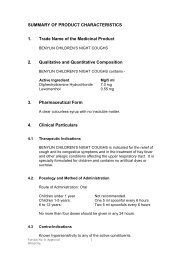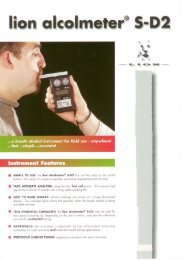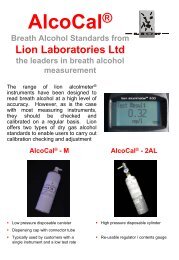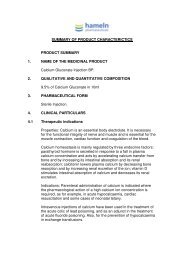Naproxen Tablets BP 500 mg - DM Wood Medical
Naproxen Tablets BP 500 mg - DM Wood Medical
Naproxen Tablets BP 500 mg - DM Wood Medical
You also want an ePaper? Increase the reach of your titles
YUMPU automatically turns print PDFs into web optimized ePapers that Google loves.
SUMMARY OF PRODUCT CHARACTERISTICS<br />
NAPROXEN TABLETS <strong>BP</strong> <strong>500</strong> MG<br />
Version 5<br />
1. TRADE NAME OF THE MEDICINAL PRODUCT<br />
Timpron <strong>500</strong> <strong>mg</strong><br />
<strong>Naproxen</strong> <strong>Tablets</strong> <strong>BP</strong> <strong>500</strong> <strong>mg</strong><br />
2. QUALITATIVE AND QUANTITATIVE COMPOSITION<br />
Each tablet contains <strong>500</strong> <strong>mg</strong> <strong>Naproxen</strong> Ph. Eur.<br />
3. PHARMACEUTICAL FORM<br />
Yellow, capsule shaped tablets marked "APS" or plain on one side and "<strong>500</strong> 0539" with a breakline<br />
on the reverse.<br />
4. CLINICAL PARTICULARS<br />
4.1 Therapeutic indications<br />
<strong>Naproxen</strong> tablets are indicated for the treatment of rheumatoid arthritis, osteoarthrosis, ankylosing<br />
spondylitis, juvenile rheumatoid arthritis, acute gout, and acute musculoskeletal disorders (such as<br />
sprains and strains), direct trauma, lumbosacral pain, cervical spondylitis, tenosynovitis, fibrositis<br />
and dysmenorrhoea.<br />
4.2 Posology and method of administration<br />
Undesirable effects may be minimised by using the lowest effective dose for the shortest duration<br />
necessary to control symptoms (see section 4.4).<br />
For oral administration.<br />
To be taken preferably with or after food.<br />
Adults<br />
Rheumatoid Arthritis, Osteoarthrosis, and Ankylosing Spondylitis:<br />
The usual dose is <strong>500</strong> <strong>mg</strong> to 1 g per day in two divided doses at 12 hour intervals.<br />
Acute Musculoskeletal Disorders and Dysmenorrhoea.<br />
<strong>500</strong> <strong>mg</strong> initially, then 250 <strong>mg</strong> every 6 - 8 hours as needed. The maximum daily dose (after the first<br />
day) is 1250 <strong>mg</strong>.<br />
Acute gout:<br />
<strong>Naproxen</strong><strong>500</strong><strong>mg</strong><strong>Tablets</strong>PL00289_0283v5<br />
1
Version 5<br />
750 <strong>mg</strong> immediately, then 250 <strong>mg</strong> every 8 hours until the attack has passed.<br />
Children<br />
For the treatment of juvenile rheumatoid arthritis in children over 5 years of age, the usual dosage is<br />
10 <strong>mg</strong>/kg bodyweight daily taken in 2 doses at 12 hour intervals.<br />
The Elderly<br />
The lowest effective dose should be used, as the elderly are at an increased risk of the serious<br />
consequences of adverse reactions. When high doses are required caution should be exercised.<br />
In patients where impaired renal function may be expected a reduced dosage should be<br />
considered. The patient should be monitored for GI bleeding for 4 weeks following initiation of<br />
NSAID therapy.<br />
4.3 Contra-indications<br />
<strong>Naproxen</strong> is contra-indicated in patients with a history of, or active peptic ulceration and active<br />
gastrointestinal bleeding.<br />
<strong>Naproxen</strong> is contra-indicated for patients with known hypersensitivity to naproxen, naproxen<br />
sodium formulations or any of the excipients.<br />
<strong>Naproxen</strong> should not be given to patients in whom aspirin or other non-steroidal antiinflammatory/analgesic<br />
drugs induce the syndrome of asthma, rhinitis or urticaria.<br />
Severe heart failure.<br />
4.4 Special warnings and special precautions for use<br />
Undesirable effects may be minimised by using the lowest effective dose for the shortest duration<br />
necessary to control symptoms (see section 4.2, and GI and cardiovascular risks below).<br />
Although naproxen is usually well tolerated, there have been reported incidences of gastro-intestinal<br />
bleeding. Therefore, patients with a history of gastro-intestinal disease receiving naproxen should<br />
be closely monitored.<br />
Serious gastro-intestinal adverse reactions, may occur at any time in patients on therapy with<br />
non-steroidal anti-inflammatory drugs. The duration of therapy does not seem to change the risk of<br />
occurrence. Studies to date have not identified any subset of patients not at risk of developing<br />
peptic ulcer and bleeding. However, elderly and debilitated patients tolerate gastro-intestinal<br />
ulceration or bleeding less well than others. Most of the serious gastro-intestinal events associated<br />
with non-steroidal anti-inflammatory drugs occurred in this patient population.<br />
The anti-inflammatory and antipyretic activities of <strong>Naproxen</strong> may reduce inflammation and fever,<br />
thereby diminishing their utility as diagnostic signs.<br />
In patients with a history of bronchial asthma or allergic disease, administration of naproxen may<br />
elicit bronchospasm.<br />
<strong>Naproxen</strong><strong>500</strong><strong>mg</strong><strong>Tablets</strong>PL00289_0283v5<br />
2
<strong>Naproxen</strong> decreases platelet aggregation and prolongs bleeding time.<br />
Version 5<br />
The use of NSAIDs may result in a deterioration of renal function.<br />
In patients with impaired renal function or cardiac impairment, naproxen should be used with great<br />
caution and serum creatinine and/or creatinine clearance should be monitored. When the baseline<br />
creatinine clearance is less than 20 ml/min naproxen is not recommended.<br />
When renal blood flow is compromised, patients should have renal function assessed before and<br />
during naproxen therapy. A reduction in daily dosage should be considered to avoid the possibility<br />
of excessive accumulation of naproxen metabolites in these patients.<br />
When liver function is impaired, the plasma concentration of unbound naproxen is increased, the<br />
significance of this is unknown but caution is advised when high doses are required.<br />
Cardiovascular and cerebrovascular effects<br />
Appropriate monitoring and advice are required for patients with a history of hypertension and/or<br />
mild to moderate congestive heart failure as fluid retention and oedema have been reported in<br />
association with NSAID therapy.<br />
Clinical trial and epidemiological data suggest that use of coxibs and some NSAIDs (particularly at<br />
high doses and in long term treatment) may be associated with a small increased risk of arterial<br />
thrombotic events (for example myocardial infarction or stroke). Although data suggest that the use<br />
of naproxen (1000 <strong>mg</strong> daily) may be associated with a lower risk, some risk cannot be excluded.<br />
Patients with uncontrolled hypertension, congestive heart failure, established ischaemic heart<br />
disease, peripheral arterial disease, and/or cerebrovascular disease should only be treated with<br />
naproxen after careful consideration. Similar consideration should be made before initiating longerterm<br />
treatment of patients with risk factors for cardiovascular disease (e.g. hypertension,<br />
hyperlipidaemia, diabetes mellitus, smoking).<br />
Haemotological<br />
Patients who have coagulation disorders or patients who are receiving drug therapy that interferes<br />
with haemostasis should be carefully observed if naproxen-containing products are administered.<br />
Patients at high risk of bleeding or those on full anti-coagulation therapy (e.g. dicoumarol<br />
derivatives) can be at increased risk of bleeding if given naproxen-containing products.<br />
Anaphylactic (anaphylactoid) reactions<br />
In susceptible individuals hypersensitivity reactions may occur. Anaphylactic (anaphylactoid)<br />
reactions may occur both in patients with and without a history of hypersensitivity or exposure to<br />
aspirin, other non-steroidal anti-inflammatory drugs or naproxen-containing products. They may<br />
also occur in individuals with a history of angioedema, bronchospastic reactivity (e.g. asthma),<br />
rhinitis and nasal polyps.<br />
Anaphylactoid reactions, like anaphylaxis, may have a fatal outcome.<br />
Steroids<br />
If steroid dosage is eliminated or reduced during therapy, the steroid dosage should be reduced<br />
slowly and the patients must be observed closely for any evidence of adverse effects, including<br />
adrenal insufficiency and exacerbation of symptoms of arthritis.<br />
<strong>Naproxen</strong><strong>500</strong><strong>mg</strong><strong>Tablets</strong>PL00289_0283v5<br />
3
Version 5<br />
Ocular effects<br />
Studies have not shown any changes in the eye attributable to naproxen administration. Rarely,<br />
adverse ocular disorders including papillitis, retrobulbar optic neuritis and papilledema, have been<br />
reported in users of NSAIDs including naproxen, although a cause-and-effect relationship cannot be<br />
established; accordingly, patients who develop visual disturbances during treatment with naproxencontaining<br />
products should have an ophthalmological examination.<br />
Combination with other NSAIDs<br />
The combination of naproxen-containing products and other NSAIDs is not recommended, because<br />
of the cumulative risks of inducing serious NSAID-related adverse events.<br />
The colour sunset yellow (E110) can cause an allergic-type reaction, including asthma. This<br />
reaction is more common in those people who are allergic to aspirin.<br />
4.5 Interaction with other medicaments and other forms of interaction<br />
Concomitant administration of antacid, colestyramine or food may delay the absorption of naproxen<br />
but does not affect its extent.<br />
Care should be taken in patients treated with any of the following drugs as interactions have been<br />
reported in some patients.<br />
Anti-hypertensives: reduced anti-hypertensive effect.<br />
<strong>Naproxen</strong> and other non-steroidal anti-inflammatory drugs may increase the risk of renal<br />
impairment associated with the use of ACE-inhibitors.<br />
Diuretics: reduced diuretic effect. Diuretics can increase the risk of nephrotoxicity of NSAIDs.<br />
Cardiac glycosides; NSAIDs may exacerbate cardiac failure, reduce GFR and increase plasma<br />
glycoside levels.<br />
Lithium: Decreased elimination of lithium.<br />
Methotrexate: Decreased elimination of methotrexate.<br />
Ciclosporin: Increased risk of nephrotoxicity.<br />
Mifepristone: NSAIDs should not be used for 8-12 days after mifepristone administration as<br />
NSAIDs can reduce the effect of mifepristone.<br />
Other analgesics: Avoid concomitant use of two or more NSAIDs. See section 4.4 Special Warnings<br />
and Special Precautions for use.<br />
Corticosteroids: Increased risk of GI bleeding. See section 4.4 Special Warnings and Special<br />
Precautions for use.<br />
Anti-coagulants: Enhanced anticoagulant effect. See section 4.4 Special Warnings and Special<br />
Precautions for use.<br />
<strong>Naproxen</strong><strong>500</strong><strong>mg</strong><strong>Tablets</strong>PL00289_0283v5<br />
4
Version 5<br />
Quinolone antibiotics: Animal data indicate that NSAIDs can increase the risk of convulsions<br />
associated with quinolone antibiotics. Patients taking NSAIDs and quinolones may have an<br />
increased risk of developing convulsions.<br />
<strong>Naproxen</strong> is highly bound to plasma proteins and if anti-coagulants, hydantoins or highly proteinbound<br />
sulphonamides are given simultaneously, overdosage of these drugs may result.<br />
Co-administration of probenecid inhibits the renal tubule secretion of naproxen, so raising its<br />
plasma concentration and prolonging its half-life.<br />
It is suggested that naproxen is withdrawn 48 hours before adrenal function tests as it may interfere<br />
with some tests for 17-ketogenic steroids. <strong>Naproxen</strong> may interfere with some assays of urinary 5-<br />
hydroxy-indoleacetic acid.<br />
4.6 Pregnancy and lactation<br />
Whilst no teratogenic effects have been demonstrated in animal toxicology studies, the use of<br />
naproxen during pregnancy should if possible be avoided. Congenital abnormalities have been<br />
reported in association with naproxen administration in man; however, these are low in frequency<br />
and do not appear to follow any discernible pattern. In view of the known effects of nsaids on the<br />
foetal cardiovascular system (a closure of ductus arteriosus), use in late pregnancy should be<br />
avoided. In the limited studies so far available, naproxen appears in the breast milk in very low<br />
concentrations and is unlikely to adversely affect the breast-fed infant. However, the use of<br />
naproxen should be avoided in patients who are breast-feeding.<br />
4.7 Effects on ability to drive and use machines<br />
Dizziness, drowsiness, vertigo, insomnia, depression or visual disturbances are possible undesirable<br />
effects after taking NSAIDs. If affected, patients should not drive or operate machinery.<br />
4.8 Undesirable effects<br />
Gastro-intestinal: the most commonly-observed adverse events are gastrointestinal in nature.<br />
Nausea, vomiting, diarrhoea, dyspepsia, abdominal pain, melaena, haematemesis, ulcerative<br />
stomatitis and gastrointestinal haemorrhage have been reported following administration. Less<br />
frequently, gastritis, duodenal ulcer, gastric ulcer, gastrointestinal perforation and colitis have been<br />
observed.<br />
Hypersensitivity: Hypersensitivity reactions have been reported following treatment with NSAIDs.<br />
These may consist of (a) non-specific allergic reactions and anaphylaxis (b) respiratory tract<br />
reactivity comprising asthma, aggravated asthma, bronchospasm or dyspnoea, or (c) assorted skin<br />
disorders, including rashes of various types, pruritis, urticaria, purpura, angioedema and, less<br />
commonly, bullous dermatoses (including epidermal necrolysis, erythema multiforme and Stevens-<br />
Johnson syndrome).<br />
The colour sunset yellow (E110) can cause an allergic-type reaction, including asthma. This<br />
reaction is more common in those people who are allergic to aspirin.<br />
<strong>Naproxen</strong><strong>500</strong><strong>mg</strong><strong>Tablets</strong>PL00289_0283v5<br />
5
Version 5<br />
Cardiovascular: Vasculitis, oedema, hypertension and cardiac failure have been reported in<br />
association with NSAID treatment.<br />
Clinical trial data and epidemiological data suggest that use of some NSAIDs (particularly at high<br />
doses and in long term treatment) may be associated with an increased risk of arterial thrombotic<br />
events (for example myocardial infarction or stroke) (see section 4.4).<br />
Eosinophilic pneumonitis and aseptic meningitis have also been reported.<br />
Other adverse events reported less commonly include:<br />
Renal: Nephrotoxicity in various forms, including glomerular nephritis, interstitial nephritis,<br />
nephrotic syndrome, haematuria and renal failure.<br />
Hepatic: Abnormal liver function, hepatitis and jaundice.<br />
Neurological and special senses: visual disturbances, optic neuritis, headaches, paraesthesia,<br />
depression, confusion, hallucinations, tinnitus, hearing impairment, vertigo, dizziness, convulsions,<br />
insomnia, inability to concentrate, cognitive dysfunction, malaise, fatigue and drowsiness.<br />
Haematological: Thrombocytopenia, neutropenia, agranulocytosis, aplastic anaemia,<br />
hyperkalaemia and haemolytic anaemia.<br />
Dermatological: Photosensitivity, alopecia.<br />
4.9 Overdose<br />
Human experiences of overdosage with naproxen may result in drowsiness, heartburn, indigestion,<br />
nausea or vomiting. The stomach may be emptied by inducing emesis or aspiration and lavage.<br />
Activated charcoal may reduce the absorption of naproxen. (See section 5.2 Pharmacokinetic<br />
properties). Further treatment is symptomatic.<br />
Haemodialysis does not decrease the plasma concentration of naproxen because of the high degree<br />
of protein binding. However, haemodialysis may still be appropriate for a patient with renal failure<br />
who has taken naproxen.<br />
Correction of severe electrolyte abnormalities should be considered.<br />
<strong>Naproxen</strong><strong>500</strong><strong>mg</strong><strong>Tablets</strong>PL00289_0283v5<br />
6
Version 5<br />
5. PHARMACOLOGICAL PROPERTIES<br />
5.1 Pharmacodynamic properties<br />
<strong>Naproxen</strong> is a propionic acid derivative. It acts as an anti-inflammatory agent, analgesic and has<br />
anti-pyretic activity in man. By its action on cyclo-oxygenase it inhibits prostaglandin synthesis.<br />
However, the exact mechanism of its anti-inflammatory action is not known.<br />
5.2 Pharmacokinetic properties<br />
Animal studies suggest that prompt administration of activated charcoal would reduce the<br />
absorption of naproxen.<br />
Following oral administration, naproxen is fully absorbed from the gastro-intestinal tract.<br />
Depending on food in-take, peak plasma concentrations are reached 2 to 4 hours after ingestion.<br />
More than 99% is bound to plasma proteins. The plasma half-life is between 12 and 15 hours.<br />
Approximately 95% of a dose is excreted in the urine. <strong>Naproxen</strong> crosses the placental barrier and is<br />
excreted in breast milk.<br />
5.3 Preclinical safety data<br />
Preclinical information has not been included because the safety profile of naproxen has been<br />
established after many years of clinical use. Please refer to section 4.<br />
6. PHARMACEUTICAL PARTICULARS<br />
6.1 List of excipients<br />
The tablet contains lactose monohydrate, maize starch, povidone, sodium starch glycolate (type A),<br />
magnesium stearate, sunset yellow (E110) and quinoline yellow (E104).<br />
6.2 Incompatibilities<br />
None known.<br />
6.3 Shelf life<br />
36 months.<br />
6.4 Special precautions for storage<br />
Protect from light. Store in a dry place below 30ºC.<br />
6.5 Nature and contents of container<br />
PVdC coated PVC film with hard temper aluminium foil blister strips in packs of 10, 28, 56 or 100<br />
tablets.<br />
HDPE or polypropylene containers with caps or child resistant closures in packs of 100, 250 or <strong>500</strong><br />
tablets.<br />
<strong>Naproxen</strong><strong>500</strong><strong>mg</strong><strong>Tablets</strong>PL00289_0283v5<br />
7
Version 5<br />
6.6 Instructions for use/handling<br />
Not applicable.<br />
7. MARKETING AUTHORISATION HOLDER<br />
TEVA UK Limited, Eastbourne, BN22 9AG.<br />
Trading address:<br />
Leeds, LS27 0JG.<br />
8. MARKETING AUTHORISATION NUMBER<br />
PL 0289/0283<br />
9. DATE OF FIRST AUTHORISATION/RENEWAL OF AUTHORISATION<br />
8 May 2000<br />
10. DATE OF (PARTIAL) REVISION OF THE TEXT<br />
April 2007<br />
POM<br />
<strong>Naproxen</strong><strong>500</strong><strong>mg</strong><strong>Tablets</strong>PL00289_0283v5<br />
8




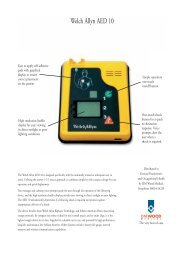
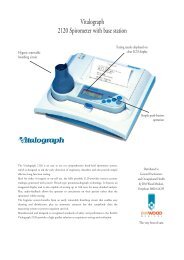
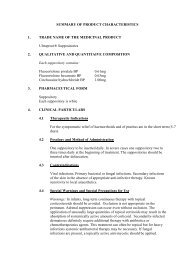

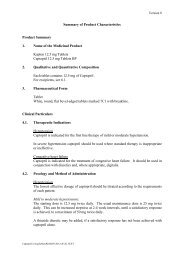
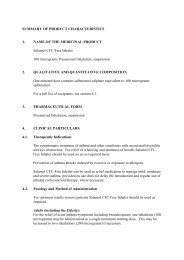



![Metoclopramide tablets 10 mg [spc] - DM Wood Medical](https://img.yumpu.com/36472416/1/184x260/metoclopramide-tablets-10-mg-spc-dm-wood-medical.jpg?quality=85)
